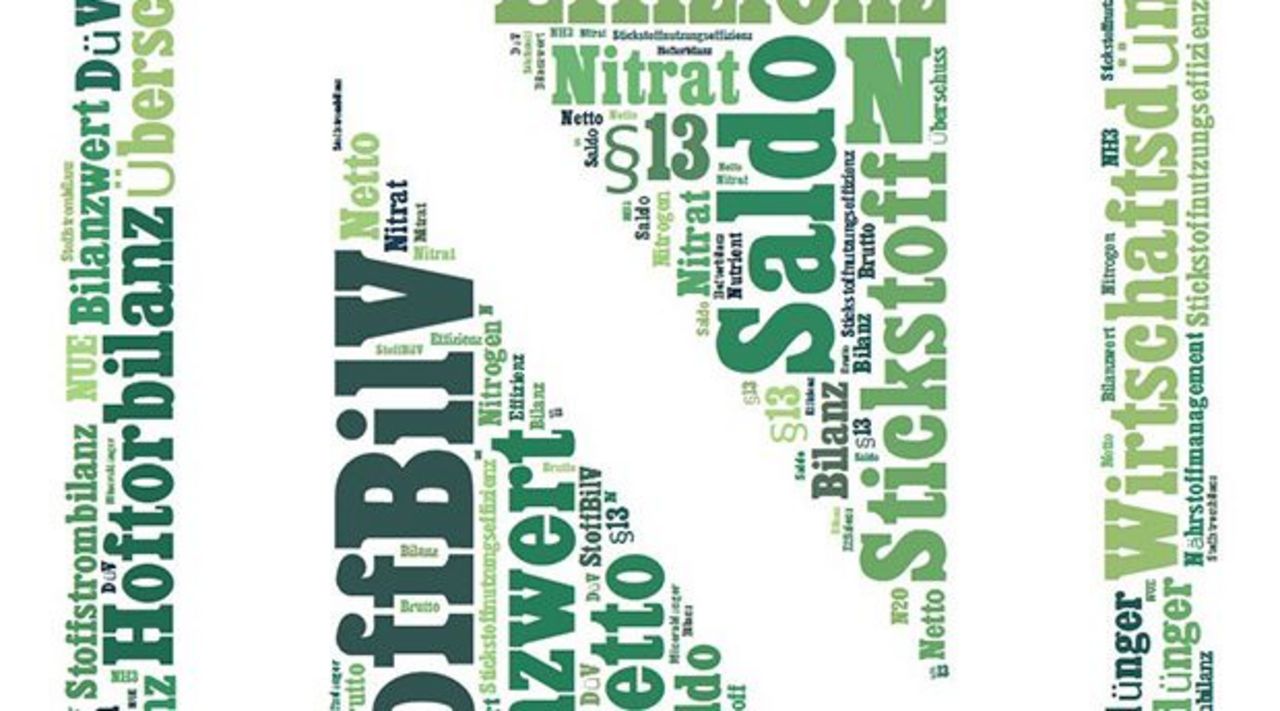Project
Efficient Nutrient Management

Analyses for reducing the environmental impact of nitrogen from agriculture - indicators and regulatory approaches to improve nutrient management
Waterbodies, biodiversity, air and climate are polluted by nitrogen emissions from agriculture - whether as nitrate, ammonia or nitrous oxide. Improving nutrient utilisation contributes to reducing environmentally hazardous nitrogen surpluses.
Background and Objective
With regard to environmental pollution by nitrogen, Germany has set ambitious reduction targets. These are defined in national and international regulations. At the EU level, the Nitrates and Water Framework Directives are relevant for water protection, the FFH Directive for biodiversity and the NEC Directive for air pollution control. There are also national targets: The Climate Action Plan 2050 specifies concrete measures for nitrogen fertilisation and the German Sustainable Development Strategy 2016 defines a maximum N surplus of 70 kilograms per hectare of agricultural land between 2028 and 2032.
Based on an analysis of internal substance flows, the project investigates regulatory and voluntary measures to improve nitrogen utilisation. In this context, one focus is on the Ordinance for Substance Flow Analysis (StoffBilV), which came into force in 2018. A differentiation will be made with regard to agricultural and climatic-topographic site characteristics in order to identify optimisation potentials for increasing nutrient utilisation and reducing N emissions on the basis of an interdisciplinary approach.
Target Group
The project results are addressed to political decision-makers (federal, state and district governments), chambers of agriculture, farm managers, environmental associations, farmer´s federations, agro-industrial actors and the interested specialist public.
Approach
The project is divided into the following work packages:
− Accompanying research on the implementation of the fertiliser law reforms of 2017 and 2019 (Fertilisation Ordinance, Ordinance of Substance Flow Analysis).
− Analysis of operational substance flows and nitrogen use efficiencies (NUE) of dairy farms in Lower Saxony with different grazing intensities.
− Carrying out a case study on the North Sea island of Pellworm, in which the nitrogenous substance flows of the agricultural sector are acquired, processed and analysed.
− Creation of "typical farms" of the German agricultural sector and application of regulatory and environmental policy instruments to identify optimisation and adaptation strategies.
− Estimates and forecasts of the possibilities of achieving the objectives, taking into account the regional operating structure and the location conditions.
− Development of strategies for an effective and efficient reduction of nutrient emissions based on analyses of the potential and cost efficiency of various options for action.
Data and Methods
As a data basis, data from the following sources are acquired and combined, among them: Agricultural structure survey and Nutrient Comparisons (according to § 8, DüV 2017).
The derivation of "typical farms" is based on evaluations of the Farm Account-ancy Data Network (FADN). The agricultural economic optimisation model FARMIS also uses the data of the FADN. This model is to be used to enable exante estimates of different policy impacts taking into account operational characteristics.
In the form of qualitative individual interviews, further data on the characteristics of operational nutrient management will be collected, which should lead to a better understanding and completion of the quantitative data.
Our Research Questions
− NUE: What are the differences in NUE between different types of farming? Which main drivers can be identified to increase NUE?
− Adaptation reactions: What are possible adaptation reactions in the case of nutrient balances that are too high with regard to the monetary effort? What is the scope for optimisation? To what extent are the different types of farms affected?
− Environmental policy instruments: How effective and cost-intensive are different environmental policy instruments in the case of too high nutrient balances?
− Regulatory instruments: What are the differences between the Fertilization Planning (§ 4, DüV 2017), Nutrient Comparison (§ 8, DüV 2017) and farm-gate balancing (§ 6, StoffBilV 2017) with regard to potential N input flows, such as mineral fertilisers?
− Which political recommendations for action can be identified from this?
Involved Thünen-Partners
Involved external Thünen-Partners
- Georg-August-Universität Göttingen
(Göttingen, Deutschland)
Duration
11.2018 - 10.2022
More Information
Project status:
finished

![[Translate to English:] Logo des Bundesministerium für Ernährung und Landwirtschaft](/media/allgemein/logos/BMEL_Logo.svg)